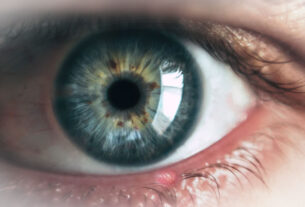A rare neurological disease where there is an alteration in the perception of the individual is noticed in Alice in wonderland syndrome. Things and objects with normal size are thought to be smaller in size or extremely large in length and width. Body parts are also seen as larger than their normal size and shape as well as vice versa.
The famous novel Alice in Wonderland by Lewis Caroll has illustrated beautifully the feelings, thoughts, perceptions of the character Alice in the novel which has a resemblance with the signs and symptoms of the rare neurological disorder Alice In Wonderland Syndrome. Some of the critical evaluators of times have even suspected that the author suffers from this rare syndrome, but nothing much in detail about this assumption. There is a reference that Lewis Caroll had migraine and the AIWS might be experienced by the author, which is very well narrated in his novel.
What is the incidence of AIWS?
The incidence of AIWS is common among children. The average age during which the AIWS begins is 6. The discrimination among male and female incidence varies with age. Research studies have shown that boys with age group 5 years to 14 years of age experience more incidence with regard to AIWS than girls of the same age group. On the other hand girls and boys of age group, 13 years to 15 years have the same incidence rates with regard to AIWS. On the contrary female students with the age group of 16 years to 18 years have shown an increased incidence of AIWS compared to boys of the same age group.
Do you know why this rare neurological disorder occurs?

The disorder is mainly caused as a result of migraine, which is the hallmark factor for the disease to occur. The use of psychoactive drugs and Epstein Barr Virus disease is the other most common cause of the disorder. Epstein Barr Virus disease in children leads to AIWS in them most often. The clinical features of this disease can be seen in other types of diseases but not to their full extent, for instance, hyperpyrexia (fever), brain lesions, infections of the brain, intoxication, epilepsy, and so on.
There is also an assumption that an unusual electrical activity takes place in the regions of the brain that controls perception and other feelings that may be the cause of AIWS, these can result in increased blood flow to these regions and thus, the syndrome with perceptual alteration occurs.
Migraine is another cause of AIWS. During the time of a migraine, there is a decreased blood flow to the area of the visual pathway, as a result, the person feels disturbing images and
visual disturbances. The intense pain felt during the migraine is due to the lack of adequate blood flow to the region of the brain. The signs and symptoms of AIWS like the altered visual perception can be before, after, or along with the episodes of migraine. The exact reason why migraine leads to AIWS is still unknown.
The genetic and environmental factors leading to AIWS are not well identified and defined. But there is a case study of a hereditary influence where all the family members; grandmother, daughter, son were affected by the disorder. But to speak much regarding these there is no such research-based evidence from the medical field.
well, you may now wonder what are the signs and symptoms of AIWS? let’s have a look into the clinical features….
The clinical manifestations of the disease differs among people and also in between the episodes. The signs and symptoms may last for few minutes to few hours, it depends on the causative factor.
Major clinical features of AIWS

AIWS can cause migraines, dizziness, nausea, and agitation in the person. At the same time, it leads to distortions in the sense of touch, hearing, and vision. There is also evidence that states that the individual feels shape and size differences in his or her own body images.
Migraine is a common symptom of the AIWS, whereas, some neurologists and experts say that the AIWS can occur as an aura; which means that before an episode of migraine the individual has disturbed perception and other features which makes us aware that a migraine episode is going to come soon.
SIZE DISTURBANCES

In the case of micropsia, you perceive the objects and things around you as smaller than their normal size, whereas with regard to macropsia, you perceive that the objects and things around you are larger in size than their original size. Both these perceptual disturbances are common in AIWS.
Perceptual distortions
In this case, the individual feels that the things around them are growing either smaller than normal or are growing larger than normal. This is also felt in their own body structures
Time distortions
In case of time disturbances, you feel that either time is running too fast or moving at the pace of a snail.
Sound distortions
Sound is also heard as loud when whispered and low volume is appreciated when spoken aloud.
Hallucinations
You may visualize things or objects not at all present as being present. Small small creatures are been seen and heard while they are not actually present or available. These are similar to the one perceived by the character Alice in the novel Alice in Wonderland, where she seems to be around many small insects and creatures.
Loss of coordination, memory loss, and emotional instability are been rarely experienced by an individual affected with AIWS. Some people come across these symptoms but are less common.
How to rule out AIWS?
There is no diagnostic test as such to find out AIWS. If you suspect yourself as having the symptoms described in the AIWS, consult a physician and rule out the issue.
The physician will perform an in-depth history collection and physical examination and a complete genetic or hereditary history collection to rule out any genetic factor. To be more specific physician may conduct
- Neurological assessment including coordination test and cranial nerve examinations.
- MRI scan to rule out any disturbances in the brain tissue, ischemia, and so on.
- Electro EncephaloGram to rule out the electrical activity of the brain and to find out abnormalities
- Blood test to find out any presence of infections including Epstein-Barr Virus etc.
How to treat AIWS?
There is no definite treatment protocol for AIWS. Research studies are being under process to find out a proper treatment regimen. Presently, based upon the cause and symptoms treatment is been provided for the person. As migraine is the hallmark symptom of AIWS, migraine prophylaxis is included in the treatment plan. Anticonvulsants, calcium channel blockers, Beta-blockers, and antidepressants are prescribed for managing AIWS. Anti-convulsant drugs are also been prescribed to subside epilepsy attacks. Psychotherapies and behavioral modifications can be practiced to deal with perceptual distortions and moving on with normal life.
Are there complications associated with AIWS?
Research studies have provided quite evidence that AIWS subsides after an episode of attack and the prognosis of the disorder is good in terms of management and thus complications are rare.
What is the prognosis rate of AIWS?
AIWS has a good prognosis. Even though you may feel difficulty in describing what you experience and how you feel about the perceptual distortions, disproportionate sizes, and everything you undergo during an episode of AIWS. You need not be frightened and become panic with this disorder, as there is a relief with management but it will take time and rarely AIWS leads to complications.
You may even experience the symptoms of AIWS many times a day and many days a week, sometimes in a continuous manner and at times periodically. Sometimes, there may not be any symptoms for weeks and months. Over course of time AIWS may subside on its own and some people totally recover when they enter adulthood.




